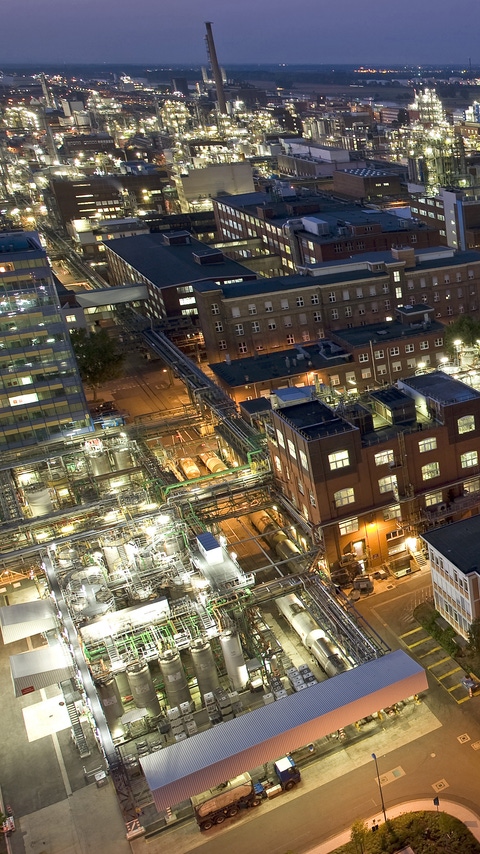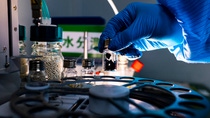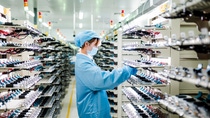BASF in Greater China 2022
The BASF Group
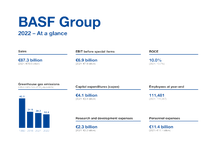
We steer our six segments along our value chains to address the needs of our customers with differentiated solutions and business strategies.
Segment data

The segment supplies BASF’s other segments and customers with basic chemicals and intermediates.

The segment offers chemical solutions for surfaces and automotive coatings, as well as battery materials and catalysts.

The segment offers advanced materials and their precursors for the plastics and plastics processing industries.

The segment produces ingredients and solutions for consumer applications such as human and animal nutrition, and home and personal care.

The segment is an integrated provider of seeds, crop protection and digital solutions for the agricultural sector.

The segment develops and markets ingredients and additives for industrial applications.
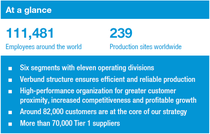.png)
Sites and Verbund
As one of the world’s largest chemical companies, BASF is present in 91 countries. We operate 239 production sites worldwide– including Ludwigshafen, the world’s largest integrated chemical complex owned by a single company. It was there, in 1865, that the foundation stone was laid for the Verbund concept, which remains a key strength of BASF today: Intelligently linking and steering our plants in a Verbund structure creates efficient value chains – from basic chemicals to high value added solutions such as coatings or crop protection products. The Verbund enables us to manage our production in a resource-efficient, carbon-optimized and reliable way. By-products from one facility are used as feedstocks elsewhere, for example. This saves us raw materials and energy, avoids emissions, lowers logistics costs and leverages synergies.
In addition to Ludwigshafen, Germany, BASF operates five other Verbund sites in Antwerp, Belgium; Freeport, Texas; Geismar, Louisiana; Kuantan, Malaysia; and Nanjing, China. Another Verbund site is being built in Zhanjiang in the southern Chinese province of Guangdong.
Organization of the BASF Group
This segment structure enables us to steer our businesses in a differentiated way according to market-specific requirements and the competitive environment. We provide a high level of transparency around the results of our segments and show the importance of the Verbund and value chains to our business success. BASF aims to differentiate its businesses from their competitors and establish a high-performance organization to enable BASF to be successful in an increasingly competitive market environment.
The operating divisions, the service units, the regions and the corporate center are the cornerstones of the BASF organization. This organizational structure lays the foundation for customer proximity, competitiveness and profitable growth.
Our eleven divisions bear strategic and operational responsibility and are organized according to sectors or products. They manage the 52 global and regional business units and develop strategies for 72 strategic business units.
BASF’s regional and national companies represent the Group locally and support the growth of business units with local proximity to customers. For financial reporting purposes, we organize the regional companies into four regions: Europe, North America, Asia Pacific, as well as South America, Africa and Middle East.
To strengthen our innovation capabilities, we reorganized our global research activities in 2022 and aligned them even more closely with the needs of our customers. As part of this, we integrated downstream research into the divisions and bundled activities with broad relevance for our customers in a research division. This division is globally positioned with research centers in Europe, North America and Asia Pacific.
Five service units provide competitive services for the operating divisions and sites: Global Engineering Services, Global Digital Services, Global Procurement, European Site & Verbund Management and Global Business Services (finance, human resources, environmental protection, health, safety and quality, intellectual property, communications, procurement, supply chain and in-house consulting services).
We have driven forward the bundling of services and resources in the Global Business Services unit, making greater use of the digitalization of processes.
The Corporate Center supports the Board of Executive Directors in steering the company as a whole. These include central tasks from the following areas: strategy, finance and controlling, compliance and law, tax, environmental protection, health, safety and quality, human resources, communications, investor relations, corporate audit and the Net Zero Accelerator unit.
Procurement and Sales Markets
BASF supplies products and services to around 82,000 customers1 from various sectors in almost every country in the world. Our customer portfolio ranges from major global customers and small and medium-sized enterprises to end consumers.
We work with over 70,000 Tier 1 suppliers2 worldwide. They supply us with important raw materials, chemicals, investment goods and consumables, and perform a range of services. Important raw materials (based on volume) include naphtha, liquid gas, natural gas, benzene and caustic soda.
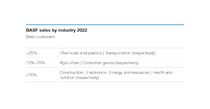.png)
1 The number of customers refers to all external companies (sold-to parties) that had contracts with the BASF Group in the business year concerned under which sales were generated.
2 BASF considers all direct suppliers of the BASF Group in the business year concerned as Tier 1 suppliers. These are suppliers that provide us with raw materials, investment goods, consumables and services. Suppliers can be natural persons, companies or legal persons under public law.
Business and Competitive Environment
BASF’s global presence means that it operates in the context of local,regional and global developments and a wide range of conditions.
These include:
- Global economic and political environment
- Legal and political requirements (e.g. E.U. regulations)
- International trade agreements
- Industry standards
- Environmental agreements (e.g. E.U. Emissions Trading System)
- Social aspects (e.g. U.N. Universal Declaration of Human Rights)
BASF holds one of the top three market positions in around 80% of the business areas in which it is active. Our most important global competitors include Arkema, Bayer, Clariant, Corteva, Covestro, Dow, Dupont, DSM, Evonik, Huntsman, Lanxess, SABIC, Sinopec, Solvay, Sumitomo Chemical, Syngenta, Wanhua and many hundreds of local and regional competitors. We expect competitors from Asia and the Middle East in particular to continue to grow in significance in the years ahead.
Corporate Legal Structure
As the publicly listed parent company of the BASF Group, BASF SE takes a central position: Directly or indirectly, it holds the shares in the companies belonging to the BASF Group, and is also one of the largest operating companies. In the BASF Group Consolidated Financial Statements, 248 companies including BASF SE are fully consolidated.
We consolidate nine joint operations on a proportional basis and account for 23 companies using the equity method.
For more information on the companies belonging to the BASF Group, see basf.com/en/corporategovernance
